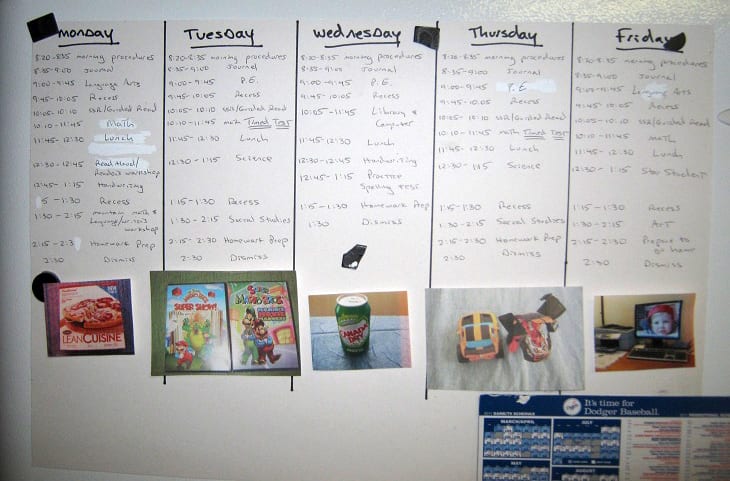Do any of you use some sort of “earnings chart” for your child on the autism spectrum?
Back when our child received DTT services 14 hours a week in our home, his DTT supervisor encouraged us to begin to use a behavioral earnings chart. During this time, our child was having too many tantrums and/or issues with compliance. Often, he would have these problems in relation to not getting a preferred item.

To help lesson my child’s behaviors, we decided to integrate his desire for preferred items with a “challenge” in the form of an earnings chart.
At the beginning of a session, his supervisor would tell him what item he was working for on that day. For him to earn that particular preferred item at the end of the session, he was told he would have to either have no behaviors during the session or he would have to lessen the duration of a behavior or a tantrum.
The second option referred to a specific time period of a time out and his emerging ability to calm himself down. If a time out lasted one minute less than a time out the day before, meaning he calmed himself sooner, then he would have earned his preferred item.
When my child began pre-school, we adapted the earnings chart to his school schedule. How exactly did I make a school-related earnings chart?
I took a big piece of white poster board and listed the days of the week (minus Saturdays and Sundays) in five columns (one for Mondays, one for Tuesdays, one for Wednesdays, one for Thursday, and one for Fridays).
Underneath each day, I attached one piece of adhesive Velcro. This is the kind of Velcro that comes with one “rough” side and one “soft” side. By adhering one side of the tandem to the chart, I could add or remove something that was attached to the other side at my leisure.
That “something” was a preferred item, or rather a photo of my child’s preferred items. I literally took photos of all the items that my child preferred to play with, especially the items that he obsessed over. These items would change, by the way, approximately every six months or so.
From my digital camera, I downloaded the pictures to my computer and then printed them out and cut them into 3 x 5’s (approximately).
When I first began the chart, I would take the pages of photos to Kinkos and have them laminated. My child’s DTT supervisor encouraged me to laminate them because she wanted my child to be able to handle the photos himself and place them on his own chart. This allowed him to be a part of his own earnings chart. My child was still very young at this time, however, so we laminated the photos so that it was harder for him to damage them.
To place the photos on the chart, I put the other side of the Velcro on the back of each photo. This allowed the photos to be adhered to the chart. We added one item per day to the chart and changed them as needed.
To determine whether my child had earned his preferred item at the end of a school day, his DTT therapist or his school aide would either give him a “sticker” day or an “X” for that day. If he came home with a “sticker day,” he would have earned his chart item. If he had had a good day on a Tuesday, for example, he would have earned the item that was on the chart for Tuesdays. An “X” day meant he did not earn his item for that day.
When my child began second grade, his school schedule became very structured. Because of the precise times and exact topics that were given on varying day, we requested a copy of his daily schedule from his teacher.
Because his school schedule was now more complicated, on a brand new piece of white poster board, I copied his 2nd grade daily schedule to his earnings chart. If his class was scheduled to study “science” for an hour on Tuesdays, we could look at his at-home earnings chart for Tuesdays and the scheduled time for science class.
By having his earnings chart be his actual school schedule, it helped our child learn to follow his own schedule. The theory here is that he’d be less surprised if he had to stop drawing during free time because his schedule said it was time for science class.
My child and I check the earnings chart before we go to school every morning. We believe it reinforces his ability to take care of himself at school – minus behaviors and plus preferred items.
For many reasons, our child’s earnings chart continues to this day. This is year six using a chart. We believe it’s still effective. Our child still responds to it. He understands when he hasn’t earned his chart item. He accepts it and works hard to not repeat the behavior that caused the “X.”
If the chart wasn’t effective anymore, we would have discontinued it. Someday, our child won’t need it anymore. Until then, we continue to use the Earnings Chart.
Next week: The Communication Log. What is it, who implements it, and how is it linked to my child’s earnings chart?





